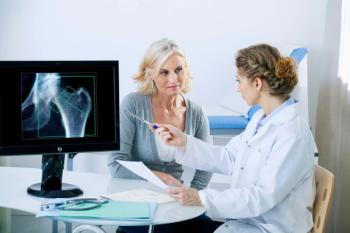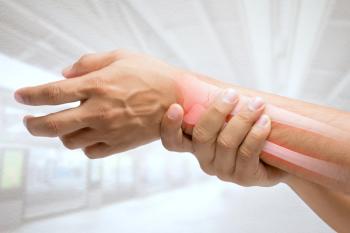
Vitamin D deficiency leads to lower back pain
Vitamin D deficiency is significantly associated with lumbar disc degeneration and low back pain among postmenopausal women, according to research from Menopause.
Vitamin D deficiency is significantly associated with lumbar disc degeneration (LDD) and low back pain (LBP) among postmenopausal women, according to new
Methods
The retrospective observational study included data from 232 postmenopausal women (mean age 65.6 years ± 10.0 years) between July 2017 and December 2018. Each participant had been diagnosed with LDD or spinal instability based on magnetic resonance imaging (MRI) and clinical symptoms.
Blood samples were collected to measure serum concentrations of 25(OH)D, Ã type I collagen carboxyl terminal peptide (Ã-CTX) and the N-terminal fragment of osteocalcin (N-MID). Participants were assigned to one of three groups based on their 25(OH)D concentrations: severe deficiency (< 10 ng/mL), deficiency/insufficiency (10-30 ng/mL) and normal (≥ 30 ng/mL). Bone mineral density was determined by dual-energy x-ray absorptiometry and participants with a T score of < -2.5 were diagnosed with osteoporosis. A T score of -2.5 to -1.0 was diagnosed as osteopenia and a T score of > -1.0 was considered normal. A visual analog scale (VAS) score was used to assess the severity of LBP and participants were assigned to three groups according to this severity: a mild pain (1-3) group, a moderate pain (4-6) group, and a severe pain (7-10) group. Disc degeneration was evaluated using the Pfirrmann grading system.
Findings
The serum 25(OH)D concentrations of the 232 enrollees were 19.38 ± 9.21 ng/mL. Among the whole sample, 30 (12.9%), 173 (74.6%) and 29 (12.5%) of the participants were assigned to the severe deficiency, deficiency/insufficiency, and normal groups, respectively. The authors found no differences among the groups based on BMI, hypertension, diabetes, drinking, smoking, N-MID, or Ã-CTX (P > 0.05). However, the groups significantly differed in BMD, VAS scores, and the proportion using vitamin D supplements (P < 0.05). Participants with normal vitamin D concentrations tended to have low VASs, high BMDs, and were more likely to be taking vitamin D supplements than participants in the severe deficiency, and deficiency/insufficiency groups (P < 0.05).
The authors found significant differences in the circulating vitamin D concentrations between the normal, osteopenia, and osteoporosis groups (21.62 ± 9.42 vs 18.01 ± 9.41 vs 17.39 ± 8.17 ng/mL, respectively; P < 0.05), normal weight and overweight participants (20.39 ± 9.45 vs 16.14 ± 8.39 ng/mL; P < 0.05), participants who were not taking supplements and those who were (18.46 ± 8.47 vs 23.07 ± 11.10 ng/mL; P < 0.05), and participants with mild and moderate-to-severe pain (21.51 ± 9.79 vs 17.24 ± 8.08 ng/mL; P > 0.05). Lower 25(OH)D concentration (< 10 ng/mL) was also significantly associated with more pronounced LDD in the lumbosacral region (L4-S1, L1-S1, P < 0.05), but less so in the upper lumbar region.
After adjusting for confounding factors, vitamin D deficiency, smoking, lack of vitamin D supplements, high BMI, and low bone mineral density T score were associated with higher incidence of moderate-to-severe pain among postmenopausal women.
Conclusions
Based on the findings of this study, the authors believe that vitamin D deficiency is highly prevalent among postmenopausal women and is strongly associated with LDD and LBP in this population. Care providers may want to consider communicating with their at-risk patients about the benefits of vitamin D supplements to reduce the number of vitamin D deficient women. The authors recommend that future research should be focused on investigating the clinical efficacy of vitamin D supplementation for preventing and treating LDD and LBP.
Newsletter
Get the latest clinical updates, case studies, and expert commentary in obstetric and gynecologic care. Sign up now to stay informed.



